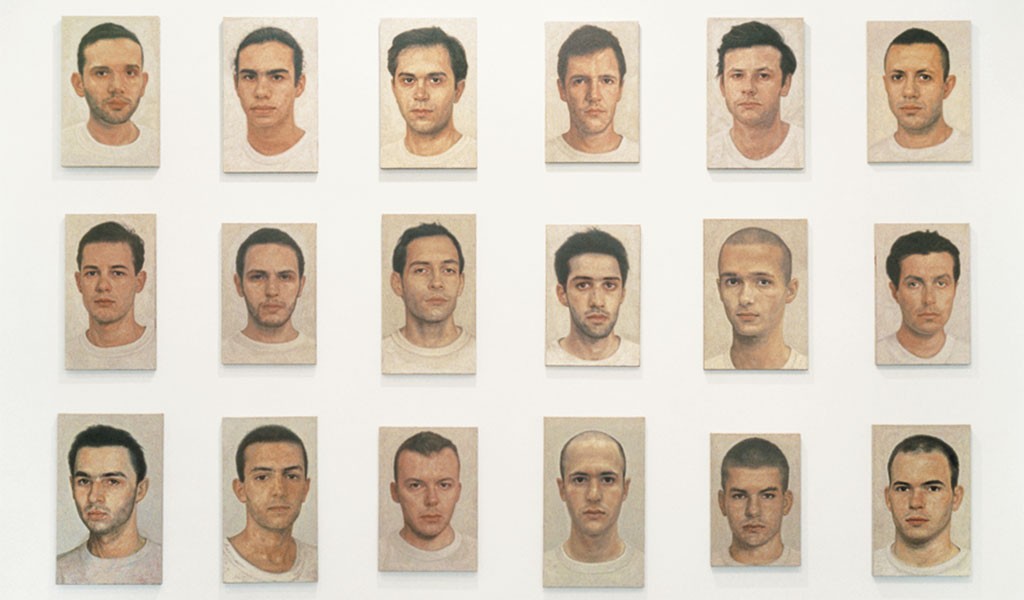Athens,
KALLIRROIS AVE. & AMVR. FRANTZI STR. (FORMER FIX FACTORY) ATHENS, 11743, GREECE
22 October 2009 - 10 January 2010
The National Museum of Contemporary Art, Athens organizes the first retrospective exhibition in Greece of the important Iranian artist Y.Z. Kami, titled Beyond Silence. The exhibition will be inaugurated on October 22nd 2009 and last until January 10th, 2010. In the exhibition are presented 16 works (painting, collage, sculpture) created from 1990 until today, that constitute landmarks in Y. Z. Kami’s artistic career.
Y.Z. Kami was born in Teheran in 1956. His first encounter with painting came at an early age. He studied philosophy at the University of California, Berkeley (1974-75) and the Sorbonne (1976-81). His work has been presented in solo exhibitions in the U.S.A. and Europe while he has also participated in important international exhibitions, such as the 9th Istanbul Biennale (2005) and the 52nd Venice Biennale (2007). In Greece he became widely known from his participation in EMST’s international exhibition titled The Grand Promenade (2006), in which he participated with an installation in the archaeological site of the Roman Agora and a painting in the spaces of Technopolis. His works can be found in major New York museums, such as The Metropolitan Museum of Art, The Museum of Modern Art and The Whitney Museum of American Art. He is represented by Gagosian Gallery, New York. He lives and works in New York.
The exhibition is organized around two groups of works. The first includes large scale portraits, often measuring three meters high, as well as group portraits. Everyday people, of different ages and nationalities, are depicted in frontal stance. These people, others with their eyes closed, others with their gaze turned inwardly, are presented absorbed in their own world. The artist, who is fascinated by the human face, uses realism to attribute the characteristics of his portraits. He is particularly interested in expressing the spirituality as well as the emotional state of the people he paints. The inwardness of these people in combination to Kami’s artistic practice, refer to Fayum (funerary portraits of the 1st – 3rd century AD) as well as to Byzantine hagiography tradition.
The second group includes works from the series titled Endless Prayers which express the transcultural and transreligious orientation of the artist. Common morphic characteristic of these works are the homocentric circles which are created by brick-shaped cut-outs, on which are written extracts from poetry by the 13th century Persian mystic poet Rūmī and other Persian, Arabic and Jewish prayer texts. Through writing and the spiraling pattern these works allude to Sufi mysticism, to the whirling motions in the rituals of dervishes, to elements of Islamic architecture, to Byzantine symbols, to a universal inner, spiritual quest.
In the center of the exhibition space dominates the installation Rumi, The Book of Shams e Tabrizi (In Memory of Mahin Tajadod), 2005 which is composed of bricks arranged in various concentric circles. This work which is created with soapstone, salt and lithography ink, is dedicated to his teacher Mahin Tajadod, who introduced Kami to Sufism, and particularly to Rūmī’s works. On each brick the artist has written verses from poems by the Persian mystic poet Rūmī.
Y.Z. Kami was born in Teheran in 1956. His first encounter with painting came at an early age. He studied philosophy at the University of California, Berkeley (1974-75) and the Sorbonne (1976-81). His work has been presented in solo exhibitions in the U.S.A. and Europe while he has also participated in important international exhibitions, such as the 9th Istanbul Biennale (2005) and the 52nd Venice Biennale (2007). In Greece he became widely known from his participation in EMST’s international exhibition titled The Grand Promenade (2006), in which he participated with an installation in the archaeological site of the Roman Agora and a painting in the spaces of Technopolis. His works can be found in major New York museums, such as The Metropolitan Museum of Art, The Museum of Modern Art and The Whitney Museum of American Art. He is represented by Gagosian Gallery, New York. He lives and works in New York.
The exhibition is organized around two groups of works. The first includes large scale portraits, often measuring three meters high, as well as group portraits. Everyday people, of different ages and nationalities, are depicted in frontal stance. These people, others with their eyes closed, others with their gaze turned inwardly, are presented absorbed in their own world. The artist, who is fascinated by the human face, uses realism to attribute the characteristics of his portraits. He is particularly interested in expressing the spirituality as well as the emotional state of the people he paints. The inwardness of these people in combination to Kami’s artistic practice, refer to Fayum (funerary portraits of the 1st – 3rd century AD) as well as to Byzantine hagiography tradition.
The second group includes works from the series titled Endless Prayers which express the transcultural and transreligious orientation of the artist. Common morphic characteristic of these works are the homocentric circles which are created by brick-shaped cut-outs, on which are written extracts from poetry by the 13th century Persian mystic poet Rūmī and other Persian, Arabic and Jewish prayer texts. Through writing and the spiraling pattern these works allude to Sufi mysticism, to the whirling motions in the rituals of dervishes, to elements of Islamic architecture, to Byzantine symbols, to a universal inner, spiritual quest.
In the center of the exhibition space dominates the installation Rumi, The Book of Shams e Tabrizi (In Memory of Mahin Tajadod), 2005 which is composed of bricks arranged in various concentric circles. This work which is created with soapstone, salt and lithography ink, is dedicated to his teacher Mahin Tajadod, who introduced Kami to Sufism, and particularly to Rūmī’s works. On each brick the artist has written verses from poems by the Persian mystic poet Rūmī.
